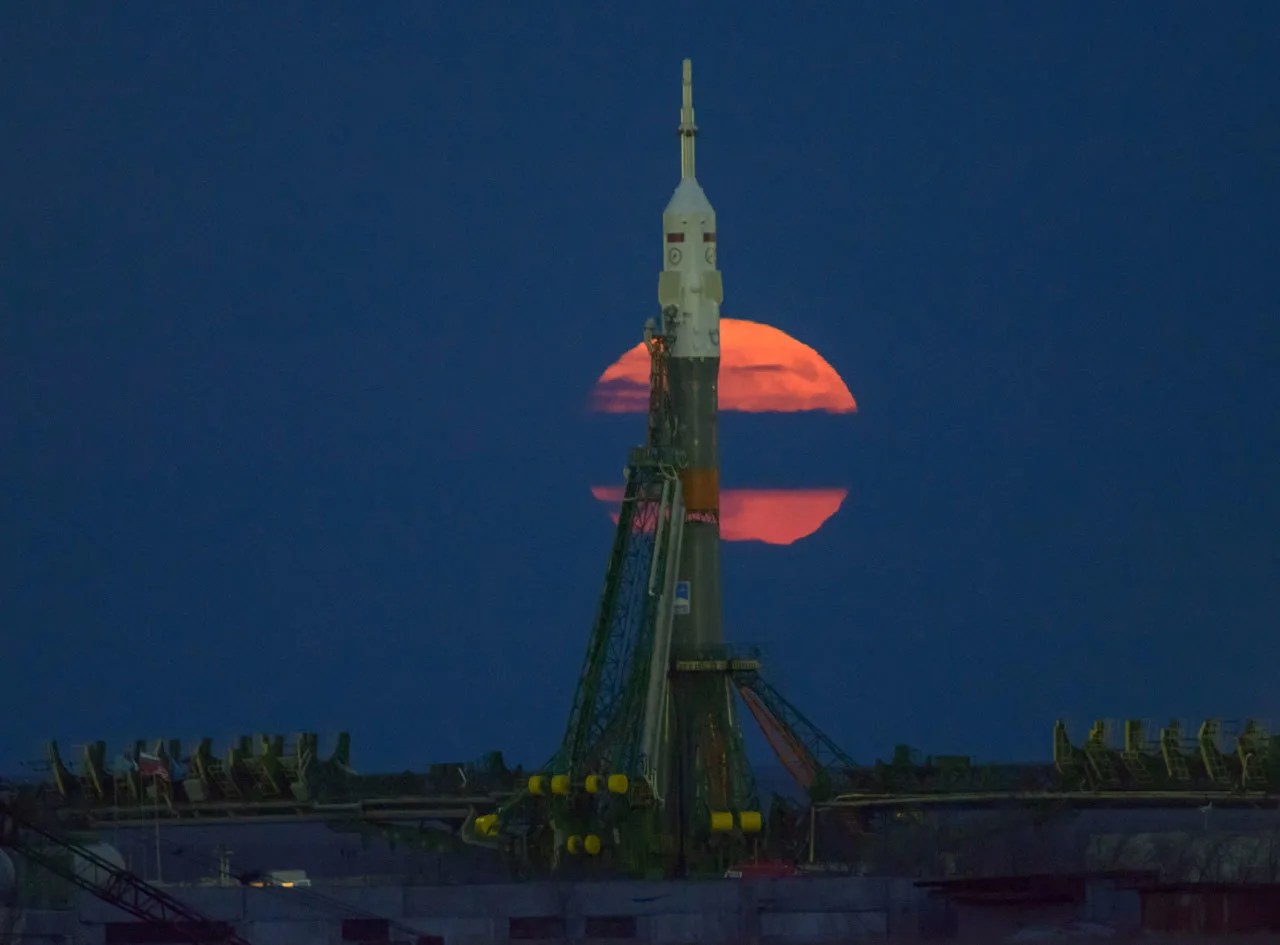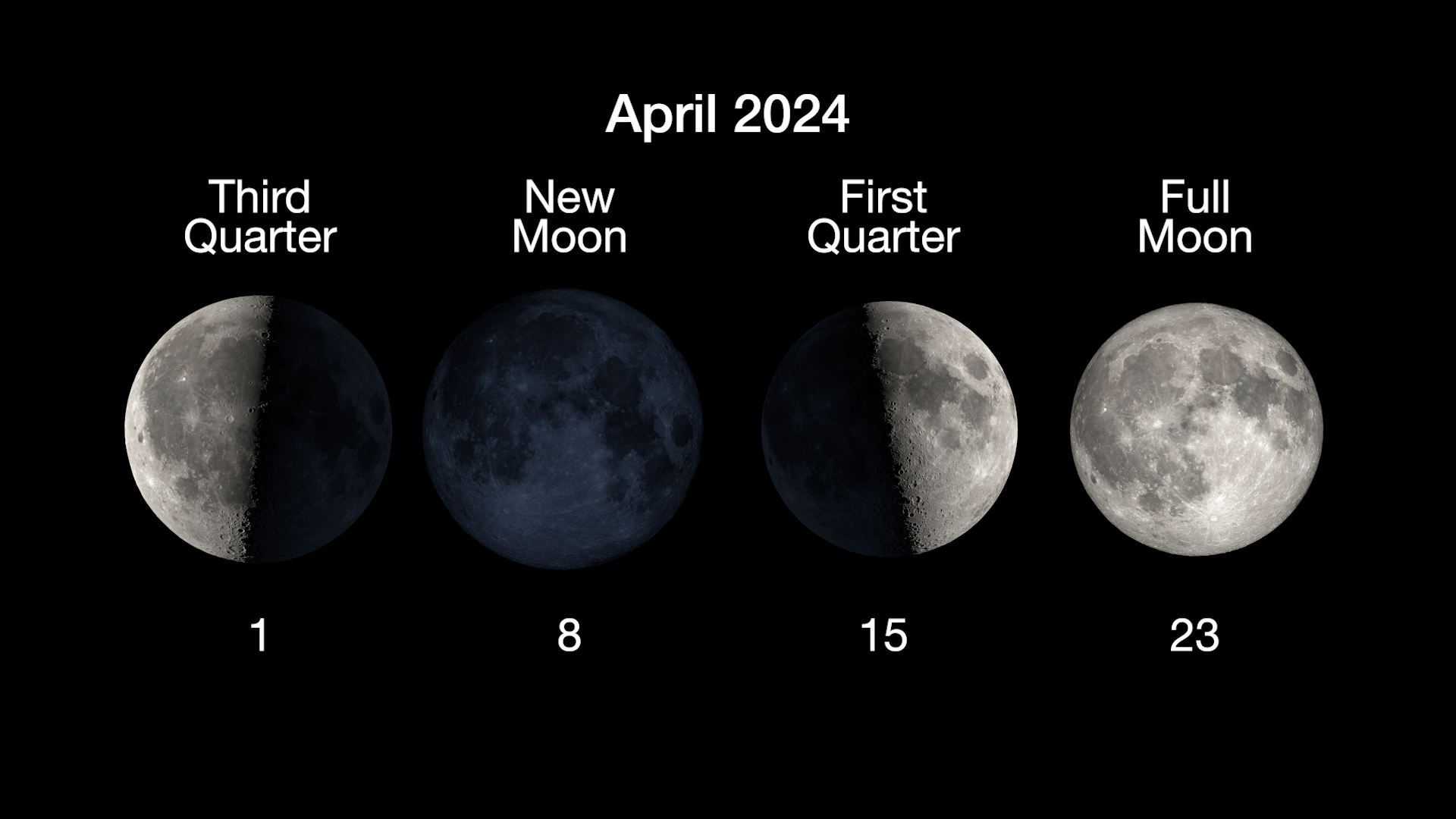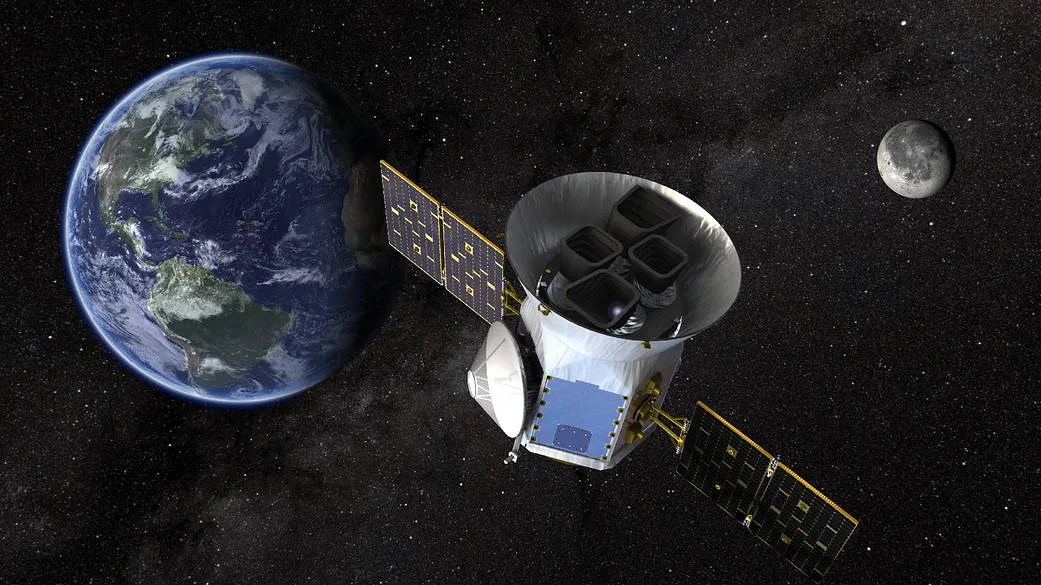14 min read

The Next Full Moon is the Crow Moon, Crust Moon, Sap Moon, Sugar Moon, Worm Moon, Lenten Moon, the Holi Festival, Medin Poya, a Supermoon, and the Purim holiday.
The next full Moon will be on Monday, March 9, 2020, appearing opposite the Sun (in Earth-based longitude) at 1:48 PM EDT. The Moon will appear full for about 3 days centered on this time, from early Sunday morning into early Wednesday morning.
The Maine Farmer's Almanac first published "Indian" names for the full Moons in the 1930's. As the full Moon in March and the last full Moon of winter, this Moon is called the Crow Moon, Crust Moon, Sap Moon, Sugar Moon, or Worm Moon. The more northern tribes of the northeastern United States knew this as the Crow Moon, when the cawing of crows signaled the end of winter. Other northern names were the Crust Moon, because the snow cover becomes crusted from thawing by day and freezing by night, or the Sap (or Sugar) Moon as this is the time for tapping maple trees.
The tribes more to the south called this the Worm Moon after the earthworm casts that appear as the ground thaws. It makes sense that only the southern tribes called this the Worm Moon. When glaciers covered the northern part of North America they wiped out the native earthworms. After these glaciers melted about 12,000 years ago the more northern forests grew back without earthworms. The earthworms in these areas now are mostly invasive species introduced from Europe and Asia.
The Europeans called this the Lenten Moon, as this Moon corresponds with Lent, and the next full Moon, the first full Moon in Spring, occurs just before Easter.
Updating the tradition of naming Moons after prominent phenomena tied to the time of year, last year my friend Tom Van Wagner suggested naming this the Pothole Moon. In our area, at least, I seem to run into a lot of them this time of year...
As the full Moon in the Hindu month Phalguna, this Moon corresponds with the spring festival Holi, which among other things includes a free-for-all game involving the spraying of colored powders and/or colored water on whomever wanders by. See for example https://en.wikipedia.org/wiki/Holi for more information.
Every full Moon is a holiday in Sri Lanka. This full Moon is the Buddhist holiday Medin Poya, marking the Buddha’s first visit to his father after his enlightenment.
This full Moon is a Supermoon. The term "Supermoon" was coined by the astrologer Richard Nolle in 1979 and refers to either a new or full Moon that occurs when the Moon is within 90% of perigee, its closest approach to Earth in a given orbit. By this definition, in a typical year there can be 3 or 4 full Supermoons in a row and 3 or 4 new Supermoons in a row. In practice, what catches the public's attention are the full Moons that appear biggest (and therefore brightest) each year.
For 2020, the four full Moons from February to May meet this 90% threshold, with the full Moons in March and April nearly tied. The full Moon next month will be slightly closer to the Earth (about 0.1%) than this March full Moon.
In the Chinese and Hebrew lunisolar calendars the months change with the new Moon and full Moons fall in the middle of the lunar months. This full Moon is in the middle of the second month of the Chinese calendar and the middle of the Adar in the Hebrew calendar, corresponding with the Purim holiday. Sundown on Monday, March 9, 2020, marks the start of Purim. Purim marks the Jewish people’s deliverance from a royal death decree around the fourth century BCE, as told in the Book of Esther.
In the Islamic calendar the months start with the first sighting of the waxing crescent Moon shortly after the New Moon. This full Moon is near the middle of Rajab, the seventh month of the Islamic year 1441. Rajab is one of the four sacred months in which warfare and fighting are forbidden.
As usual, the wearing of suitably celebratory celestial attire is encouraged in honor of the full Moon.
As for other celestial events between now and the full Moon after next:.
As winter ends and spring begins, the daily periods of sunlight continue to lengthen, changing at their fastest around the spring equinox. For the Washington, DC area, on the day of the full Moon (Monday, March 9, 2020), we will be on Daylight Savings Time (having switched the day before). The period of daylight will last 11 hours, 42 minutes. Morning twilight will begin at 6:30 AM EDT, sunrise will be at 7:28 AM, the Sun will reach a maximum altitude of 47.0 degrees at 1:18 PM, sunset will be at 7:10 PM, and evening twilight will end at 8:07 PM. By the day of the full Moon after next (April 7, 2020), the period of daylight will be 73 minutes longer, lasting 12 hours, 55 minutes. Morning twilight will begin at 5:43 AM EDT, sunrise will be at 6:43 AM, the Sun will reach a maximum altitude of 58.3 degrees at 1:10 PM, sunset will be at 7:38 PM, and evening twilight will end at 8:37 PM.
On the evening of the full Moon on Monday, March 9, 2020, as evening twilight ends (at 8:07 PM EDT for the Washington, DC area), the bright planet Venus as the evening star will appear about 32 degrees above the horizon in the west. The brightest of the stars in our skies, Sirius, will appear about 34 degrees above the horizon in the south-southwest, with the other bright stars of the local arm of our home galaxy scattered across the sky. As this lunar cycle progresses, the background of stars will appear to shift towards the west, while Venus will appear to shift slightly towards the north, moving higher in the evening sky until March 23, after which it will appear to gradually start shifting towards the horizon again. Venus will continue to gradually brighten until late April 2020. By the evening of the full Moon after next on April 7, 2020, as evening twilight ends (at 8:37 PM EDT for the Washington, DC area), Venus will appear about 32 degrees above the horizon in the west-northwest, the brightest star Sirius and the other bright stars of the local arm of our home galaxy will appear spread across the southwestern horizon, and the twin stars (Castor and Pollux) from the constellation Gemini will appear nearly overhead.
On the morning of the full Moon on March 9, 2020, as morning twilight begins (at 6:30 AM EDT for the Washington, DC area), the planets Saturn, Jupiter, and Mars will appear in a line above the southeastern horizon, with the planet Mercury appearing just above the horizon in the east-southeast. Jupiter will appear brightest at about 16 degrees above the southeastern horizon. Next in brightness will be Saturn, appearing about 13 degrees above the horizon to the left of Jupiter. Third in brightness, Mars, will appear about 18 degrees above the horizon to the right of Jupiter. As the lunar cycle progresses, the background of stars will appear to shift towards the west. Jupiter, Saturn, and Mars will also shift towards the west, but at differing rates. Mercury will appear at its highest (only about 1 degree) above the horizon at the time morning twilight begins on the morning of Monday, March 16, after which Mercury will begin to shift back towards the Sun and the horizon. The waning crescent Moon will join in with the cluster of Saturn, Jupiter, and Mars on the morning of Wednesday, March 18, which should be a good show. Jupiter and Mars will appear at their closest to each other on the morning of Friday, March 20, after which Mars will appear between Jupiter and Saturn. Mercury will no longer appear above the horizon at the time morning twilight begins after the morning of Friday, March 27. Saturn and Mars will appear at their closest to each other on the morning of Tuesday, March 31, after which Mars will appear to the left of both Saturn and Jupiter. By the morning of the full Moon after next on Tuesday, April 7, 2020, at the time morning twilight begins (at 5:43 AM EDT for the Washington, DC area), Jupiter will appear in the south-southeast at about 23 degrees above the horizon, Saturn will appear to the left of Jupiter at about 21 degrees above the horizon, and Mars will appear further to the left at about 19 degrees above the southeastern horizon, with Mercury below the horizon.
On Thursday evening into Friday morning, the bright star Pollux (one of the twins in the constellation Gemini) will appear above the waxing gibbous Moon. For the Washington, DC area, Pollux will appear about 6 degrees to the upper left of the Moon as evening twilight ends on Thursday evening at about 5:03 PM EST. Pollux will appear to the upper right of the Moon at the time the Moon is highest in the sky for the night (at 9:03 PM), and will appear to the right of the Moon when the Moon sets Friday morning at 4:37 AM.
Saturday evening into Sunday morning, the bright star Regulus will appear below the nearly full waxing gibbous Moon, shifting closer to the Moon as the night progresses. For the Washington, DC area, evening twilight will end Saturday evening at 7:05 PM EST, the Moon will reach its highest in the sky at 11 PM EST, and morning twilight will begin Sunday morning at 6:32 AM EDT. Note the change from EST to EDT.
Sunday morning, March 8, we "spring forward" into Daylight Savings Time. Don't forget to reset your clocks!
As mentioned above, the next full Moon will be on Monday afternoon, at 1:48 PM EDT.
On Tuesday morning, at 2:31 AM EDT, the Moon will be at perigee, its closest to the Earth for this orbit.
On Wednesday night into Thursday morning, the bright star appearing about 7 degrees to the right of the nearly full Moon will be Spica. For the Washington, DC area, the Moon and Spica will rise together in the east-southeast on Wednesday night at about 9:47 PM, the Moon will reach its highest in the sky for the night on Thursday morning at 3:40 AM, and morning twilight will begin around 6:26 AM EDT.
Even though they are not usually visible, I include in these Moon missives information about Near Earth Objects (mostly asteroids) that may pass the Earth within 5 lunar distances, because I find it interesting that we have discovered so many.
Sometime around the second week in March 2020 (2020-Mar-13 10:23 UTC with 4 days, 15 hours, 31 minutes uncertainty), Near Earth Object (2016 FX13), between 15 and 34 meters (50 to 112 feet) in size, will pass the Earth at between 0.4 and 64.3 lunar distances (nominally 30.6), traveling at 12.36 kilometers per second (27,660 miles per hour).
On Sunday morning, the bright, reddish colored star appearing about 7 degrees to the lower right of the waning gibbous Moon will be Antares. For the Washington, DC area, Antares will rise in the east-southeast at around 1:37 AM and morning twilight will begin around 6:21 AM EDT, about the same time as the Moon will reach its highest in the sky for the night.
Sometime around the second or third week in March 2020 (2020-Mar-15 13:29 UTC with 5 days, 3 hours, 46 minutes uncertainty), Near Earth Object (2018 GY), between 29 and 65 meters (96 to 214 feet) in size, will pass the Earth at between 3.6 and 26.1 lunar distances (nominally 6.2), traveling at 9.51 kilometers per second (21,270 miles per hour).
On Monday morning, the waning Moon will appear half-full as it reaches its last quarter at 5:34 AM EDT. The planet Mercury will appear at its highest above the horizon for this apparition, only about 1 degree in the east-southeast at the time morning twilight begins (at 6:20 AM EDT for the DC area). Mercury will reach its greatest angular separation from the Sun in the morning sky (27.8 degrees west) a few days later on March 23, 2020.
On Wednesday morning, the planets Jupiter and Mars will appear a couple of degrees above the waning crescent Moon (Jupiter to the upper left and Mars to the upper right). Saturn will appear further to the left. Seeing these celestial objects clustered together should be a good show. Try looking to the southeast about 16 degrees above the horizon before morning twilight begins (at 6:16 AM EDT for the Washington, DC area).
By Thursday morning, March 19, the waning crescent Moon will appear to have shifted to the lower left of Saturn. At 11:50 PM EDT, it will be the vernal equinox, the astronomical end of winter and start of spring. March 19th is earlier on the calendar than the equinox usually occurs, but this is because we are in a leap year and just added a day to February to bring the calendar back into sync with the solar year. Because UTC is 4 hours ahead of EDT, some commercial calendars will show this equinox on March 20.
On Friday morning, March 20, 2020, the planets Jupiter and Mars will appear at their closest to each other.
Saturday morning it may be difficult to see, but if you have a clear view of the southeastern horizon, you may be able to spot the thin, waning crescent Moon about 6 degrees to the right of the planet Mercury. The Moon will rise about 2 minutes after morning twilight begins, so you will need a clear view of the horizon to catch this pair before they are masked by the glow of dawn.
Sometime on the afternoon of Sunday, (2020-Mar-22 18:49 UTC with 2 hours, 47 minutes uncertainty), Near Earth Object (2020 DP4), between 25 and 57 meters (83 to 186 feet) in size, will pass the Earth at between 3.5 and 3.6 lunar distances (nominally 3.5), traveling at 8.10 kilometers per second (18,130 miles per hour).
Monday evening the bright planet Venus will appear at its highest in the sky at the time evening twilight ends (at 8:21 PM EDT for the Washington, DC area). The next day, Venus will reach its greatest angular separation from the Sun for this apparition, 46.1 degrees west, appearing half full when viewed through a telescope or good binoculars.
Tuesday morning, at 5:28 AM EDT, will be the new Moon, when the Moon passes between the Earth and the Sun and will not be visible from the Earth.
The day of or the day after the New Moon marks the start of the new month for most lunisolar calendars. The third month of the Chinese calendar starts on Tuesday, March 24, 2020 (at midnight in China's time zone, which is 12 hours ahead of EDT). Sundown on Wednesday, March 25 marks the start of Nisan in the Hebrew year 5780. In the Hindu lunisolar calendar, March 25 marks the start of the month of Chaitra and for some Indian states is celebrated as Ugadi or New Year's Day (see for example https://en.wikipedia.org/wiki/Ugadi for more information).
In the Islamic calendar the months start with the first sighting of the waxing crescent Moon after the New Moon. Wednesday evening, March 25, 2020, will probably mark the beginning of Sha'ban, the eighth month of the calendar and the month before Ramadan.
Tuesday mid-day, at 11:23 AM EDT, the Moon will be at apogee, its farthest from the Earth for this orbit.
On the evening of Saturday, the bright planet Venus will appear in the western sky about 8 degrees to the right of the waxing crescent Moon.
On the evening of Sunday, the bright star Aldebaran will appear about 4 degrees to the lower left of the waxing crescent Moon.
On Tuesday morning, the planets Saturn and Mars will appear at their closest to each other, with Jupiter to the right.
On Wednesday morning, the Moon will appear half-full as it reaches its first quarter at 6:21 AM EDT. On Wednesday evening, the bright star Pollux will appear about 7 degrees to the upper right of the half-full waxing Moon.
On Friday evening, the planet Venus will appear very near the Pleiades star cluster (also known as the Seven Sisters).
On Saturday evening, the bright star Regulus will appear about 5 degrees to the right of the waxing gibbous Moon.
Tuesday afternoon at 2:08 PM EDT, the Moon will be at perigee, its closest to the Earth for this orbit.
The full Moon after next will be on Tuesday night, April 7, 2020, at 10:35 PM EDT.







